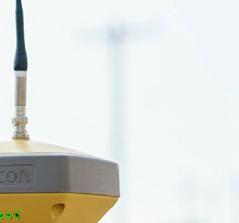









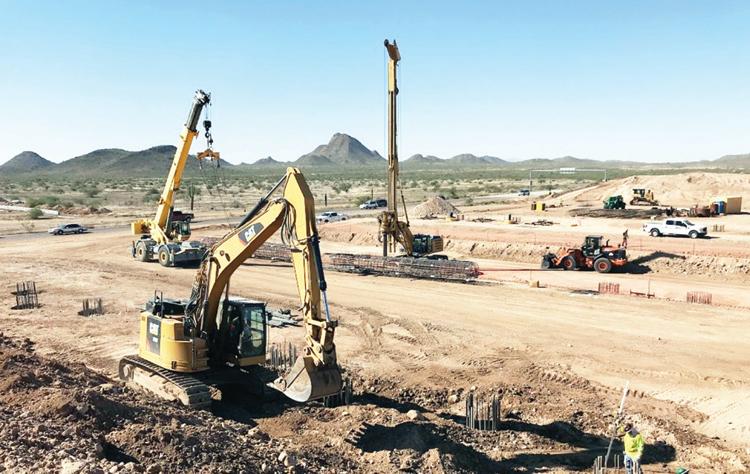
Several projects were recently honored by American Association of State Highway and Transportation Officials (AASHTO) at the 2024 America’s Transportation Awards for quality in construction in numerous categories. Among the award winners, two projects earned “Quality of Life/Community Development” honors, one for a large project (Utah) and one for a medium project (Arizona).
The Utah Department of Transportation (UDOT) recently announced that the West Davis Highway (SR-177) won the America’s Transportation Award in the category of Quality of Life/Community Development — Large Project.
This award recognizes how the West Davis Highway (SR 177) is helping improve the quality of life for Utahns by providing them more options to get where they want in the way they want.
Farmington Bay Constructors were responsible for building the massive project. The joint veture consisted of Ames Construction as the managing partner, Wadsworth Brothers Construction and Staker Parson Materials and Construction. HNTB was the project’s lead designer. Other subcontractors and key contractors included Cache Valley Electric, Comers Concrete, Harris Rebar, Harper Precast, Craghead Building Co. and Cell Crete.
UDOT congratulated all the engineers and crew members that helped make this such a successful project for the residents of Davis County.
With a rapidly growing population, the $750 million West Davis Highway project aimed to facilitate smoother and more efficient travel for commuters of various transportation modes. Led by UDOT, this highway significantly reduces traffic congestion by more than 30 percent on local roads west of I-15. According to data from the project’s Environmental Impact Statement, the anticipated time savings due to reduced congestion will amount to approximately $55 million by 2040 compared to the “no-action” alternative. Beyond its traffic alleviation benefits, the West Davis
see PROJECTS page 7


Logo courtesy of Manitowoc
Core Machinery is Manitowoc’s newest EnCORE partner, bringing certified hydraulic cylinder repair services to Manitowoc cranes in Arizona.
As part of the EnCORE program, highly skilled technicians at Core Machinery’s Hydraulic Reman facility in Tucson will rebuild hydraulic pumps and motors to meet OEM standards using only OEM parts. Whether a crane needs repair due to damage from an accident or requires an end-of-service life rebuild, the EnCORE program provides a cost-effective alternative to purchasing a new crane.
“We are excited to offer this fantastic service to our valued customers who already depend on the high-quality cranes designed by Manitowoc. We also look forward to assisting more customers in the region who require this essential service,” said Nate Kendall, Core Machinery’s president and CEO.
The benefits of using certified EnCORE repair shops include:
• Cylinders are warranted for a full year.
• Cylinders are restored to original equipment manufacturer (OEM) specifications.
• Only OEM parts are used for repairs.
• Cylinders are refurbished to like-new condition.
“We are looking forward to the strategic partnership with Core Machinery as an authorized EnCORE hydraulic cylinder rebuild and repair location. The agreement adds an essential service to the Southwest region of the United States,” said Mark Harlacher, Manitowoc’s director of product support sales and marketing.
Core Machinery’s Hydraulic Reman Tucson facility routinely repairs, tests and remanufactures large hydraulic cylinders, suspensions, pumps, motors and valves from any manufacturer. Repairs and rebuilds are assembled and tested to meet or exceed OEM specifications.
Since 1955, Core Machinery has been serving Arizona and is dedicated to providing its customers with high-quality product support solutions. It is a full-service repair company specializing in heavy-duty hydraulics, offering testing and remanufacturing capabilities.
For more information, visit www.manitowoc.com and www.coremachinery.com.
Metso has been awarded orders for the delivery of grinding plant equipment for South32’s greenfield Hermosa project in the Patagonia Mountains in southern Arizona. The order is booked in the Minerals segment’s 2024 second-quarter orders received.
Metso’s scope of delivery includes a Premier primary auto genous grinding (AG) mill and a Vertimill VTM-4500 secondary grind ing mill with the potential to sup ply other com minution and beneficiation process equip ment technolo gies.
“Metso’s broad grinding technology portfolio offers the best tool for the job. In this case, primary grinding utilizing an

AG mill eliminates steel media usage and the Vertimill in secondary grinding and regrinding improves energy efficiency and reduces steel media consumption. This is a truly Planet Positive combination,” said Christoph Hoetzel, senior vice president, grinding at Metso.
“We are very pleased to be supporting South32 in their development focus to supply critical minerals like zinc and manganese in the USA. We are committed to supporting South32 in this endeavor with our Planet Positive offering and our large service group in Arizona,” said Tim Robinson, vice president, minerals Sales in North and Central America (NCA) at Metso. For more information, visit www.metso.com.
Metso Premier primary AG mill and a Vertimill VTM-4500 secondary grinding mill.
Colorado Crane Operator School (CCOS) has been qualified by CCO Education Services (CCO EDU) as an Accredited Training Provider (ATP).
"We at Colorado Crane Operator School are incredibly proud to become an Accredited Training Provider for CCO Education Services (CCO EDU). This accreditation underscores our commitment to delivering the highest standards of crane operator training and ensuring our students are equipped with the skills and knowledge needed for a safe and successful career in the industry.” – Troy Clark (Owner of Colorado Crane Operator School).
The rigorous accreditation process required meeting a 40+ point Accredited Training Provider Standard that included submitting hundreds of pages of documentation demonstrating that the standard was met. CCO EDU thoroughly audited ATS and conducted interviews to verify the information.
Colorado Crane Operator School has long been an industry leader in CCO Crane Certifications, further solidifying its commitment to excellence in crane safety and training. With a long-standing
history of collaboration with CCO, our school has consistently set the benchmark for crane operator and rigging education. Our dedication to upholding the highest safety standards and providing top-tier training has earned us a reputation as a trusted and respected institution in the field. As an Accredited Training Provider for CCO Education Services (CCO EDU), we continue to lead the way in preparing crane operators for successful and safe careers, reflecting our unwavering commitment to industry advancement and safety excellence.
CCO EDU launched the ATP program in 2024 to demonstrate evaluation and identification of high-quality training providers. “The ATP designation identifies training organizations that have met the stringent standards put in place by CCO EDU,” said CEO Thom Sicklesteel. “We congratulate the Colorado Crane School team on meeting this standard and congratulate them on the well-deserved ATP recognition.”
CCO Education Services LLC (CCO EDU) is a wholly owned subsidiary of
the National Commission for the Certification of Crane Operators (NCCCO). CCO EDU was formed in 2023 to support the mission of NCCCO by helping to improve the standards of knowledge for those working in and around load handling equipment. Learn more at www.ccoedu.org.
Colorado Crane Operator School plays a pivotal role in helping individuals obtain their CCO Certifications by offering comprehensive training and certification programs tailored to meet industry standards. With a focus on safety, expertise, and practical experience, the school provides hands-on training and classroom instruction to ensure students are well-prepared for the CCO exams. By staying updated with the latest regulations and technological advancements, Colorado Crane Operator School equips aspiring crane operators with the knowledge and skills necessary to excel in their careers, promoting safety and efficiency in the crane and rigging industry.








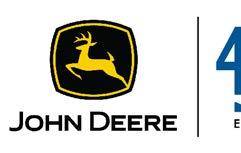









































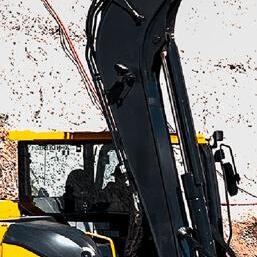








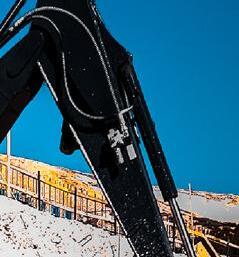

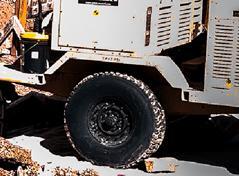


















The New Mexico Department of Transportation (NMDOT) has announced the successful application for the Large Bridge Grant for its I-25 Nogal Canyon Bridge Replacement Project in Socorro County, N.M.
The NMDOT has been awarded $71 million in grant funding through the Federal Highway Administration’s (FHWA) competitive Bridge Investment Program, established by President Biden’s Bipartisan Infrastructure Law. The project will replace two existing bridges that carry Interstate 25 over Nogal Canyon in Socorro County. The existing truss bridges contain nonredundant steel tension members and the superstructures have experienced deterioration, which has accumulated over time. The bridges are approaching the end of their service life. The project also includes the reconstruction of the vertical geometry of the I25 approaches to the new bridges and flattening the decent grade into Nogal Canyon to make it appropriate for current design speeds.
“The New Mexico Department of Transportation is ecstatic to receive this funding to address the infrastructure needs in this portion of the state and make this the signature bridge of our interstate system,” said NMDOT Cabinet Secretary Ricky Serna. “This will ensure efficiency for all users on the interstate corridor and will strengthen the economic competitiveness of the region and the State.”
“The grant funding will help the Department replace aging bridge structures, keeping the traveling public safe and ensures the movement of people and goods along the I-25 corridor, said David Quintana, chief engineer. “This project will be the first project that will utilize an alternative procure-
ment with the use of Construction Manager General Contractor (CMGC). This method of project development brings in the contractor early in the design process to minimize risks during construction and speed up the overall delivery of the project, thereby reducing costs.”

The Large Bridge Project Grants under the Bridge Investment Program are available for bridges with total eligible project costs over $100 million, with minimum grant awards of $50 million and a maximum award of 50 percent of the total eligible project costs. Priority consideration is given to projects ready to proceed to construction. The program also funds projects that require pre-construction work and benefit from a multi-year grant agreement. New Mexico is one of 13 states that will receive funding for the repair and replacement of large bridges through the program.
The project will replace two existing bridges that carry Interstate 25 over Nogal Canyon in Socorro County. The existing truss bridges contain nonredundant steel tension members and the superstructures have experienced deterioration, which has accumulated over time.
consumers, and create good-paying jobs across the country.
By the Numbers: Nogal Canyon Bridge Replacement Project
• Socorro County, N.M.; 1,070,545 trucks annually (2,933 trucks per day); 4,460,300 vehicles annually (12,220 vehicles per day)
• Grant Funding: $71,250,000
The Bipartisan Infrastructure Law established the Bridge Investment Program and invests $40 billion over five years to ensure the nation’s bridges remain safe and operational, meet current and future traveler needs, support local economies, strengthen supply chains to keep costs down for
• Grantee: New Mexico Department of Transportation
• New Mexico Department of Transportation Grant Match: $34,750,724
• Additional Federal Funding: $36,525,600
• Estimated Total Project Cost: $142,526,324.
Arizona’s highways have existed almost since statehood in 1912, but the agency overseeing them, the Arizona Department of Transportation, marked its 50th anniversary.
It’s all because state lawmakers, facing a booming population and accelerating transportation needs, decided to consolidate the Arizona Highway Department and Arizona Aeronautics Department as of July 1974. Since then, ADOT employees throughout the state have expanded the state’s transportation infrastructure, implemented new technologies and innovations and provided safer and more efficient ways to keep Arizona travelers moving safely.
Gov. Katie Hobbs marked this milestone with a letter to ADOT staff highlighting the agency’s accomplishments and innovations, including not just highways, but the AZ511 traveler information system and AZMVDNow.com, the online portal through which Motor Vehicle Division customers can conduct dozens of transactions.
“Most importantly, it is ADOT’s dedicated employees, past, present and future, who shape our state’s transportation system through public service and leadership that ensures Arizona families make it to their destinations safely,” Governor Hobbs said.
When ADOT was created, there were
approximately 5,800 mi. of state highway and the interstate system in Arizona was 86 percent complete. Since then, ADOT has added more than 1,100 mi. to the state’s transportation system.
“Our state is more connected than ever,” ADOT Director Jennifer Toth said. “ADOT employees have worked hard over the decades to expand and improve Arizona’s transportation system. Because of that, people can safely travel throughout our state and businesses can grow.”
ADOT has had seven other directors over five decades, including Mary Peters, who served from 1998 until 2001, when she became administrator of the Federal Highway Administration (FHWA). In 2006, Peters became U.S. Secretary of Transportation. Former ADOT Director Victor Mendez also served in Washington, D.C., as FHWA administrator for five years and then was U.S. Deputy Secretary of Transportation from 2014 to 2017.
The award-winning Arizona Highways magazine, which was founded in 1921, continued to be produced by ADOT. By inheriting Grand Canyon National Park Airport, which began operations in 1967, ADOT became the first state DOT with its own airport.
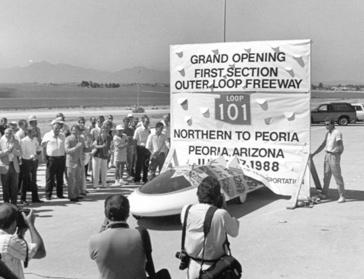
ADOT photo
The Arizona Highway Department and Arizona Aeronautics Department consolidated as of July 1974.
Arizona’s transportation system has seen many changes over the last five decades. Interstate 17 was completed to Flagstaff in 1978. In 1990, the Papago Freeway’s dedication in Phoenix marked the completion of I-10 through Arizona, and a year later ADOT completed the U.S. 60 Superstition Freeway. Recent accomplishments include completing the Loop 202 South Mountain Freeway in 2019 and dedicating flyover ramps in Nogales connecting the important commercial route SR 189 with Interstate 19.
In terms of technology, ADOT was the
nation’s first to develop a thermal camerabased detection and warning system to reduce the risk from wrong-way drivers and to deploy a pilot dust detection and warning system on 10 miles of I-10 between Tucson and Phoenix.
ADOT is fortunate to have a handful of employees who have been along for all 50 years.
“I get to work with and learn from some of the best and brightest people,” said Ed Green, a 62-year state employee who started with the Arizona Highway Department and now is a hazardous material coordinator in ADOT’s environmental planning group.
“Not only ADOT, but the world has changed with the inclusion of available technologies that make our tasks easier and quicker,” said Tami Wollaston, who started as a draftsman nearly 51 years ago and currently is a transportation engineering specialist in ADOT’s Roadway Engineering Group.
“Over time, this agency also has included necessary environmental and cultural features along state highways,” said LeRoy Brady, chief landscape architect in ADOT’s roadway engineering group and a 50-year employee. “We’ve improved highways while maintaining Arizona’s unique beauty.
PROJECTS from page 1
Highway project has extended the local active transportation infrastructure by almost 10 mi. of new trails, linking several existing regional trails such as the Emigration Trail and the Legacy Parkway Trail. This trail network provides additional opportunities for recreational users as well as bicycle commuters; helping them get where they want to go via the mode they want to use to get there.
A recent Arizona Department of Transportation project that constructed Loop 303 interchanges at 43rd and 51st avenues near Interstate 17 is a winner in the 2024 America’s Transportation Awards competition that includes a focus on community development.
The $70 million Loop 303 project earned a West Region award in the “Quality of Life/Community Development, Medium Project” category in the national competition among state departments of transportation.
Fisher Sand and Gravel, the general contractor based out of Tempe, Ariz., was tasked with performing the work.
The competition is sponsored by AASHTO, an association representing highway and transportation departments nationwide, as well as AAA and the U.S. Chamber of Commerce.
ADOT partnered with the Maricopa Association of Governments (MAG), the regional transportation planning agency and city of Phoenix to accelerate construction of the Loop 303 bridges and ramps to address current and future
traffic growth near the Taiwan Semiconductor Manufacturing Co. plant in the north Valley. The interchanges were completed in September 2023, several years sooner than originally planned.
“This project is an example of great teamwork and cooperation among partnering organizations,” said ADOT’s Central District Administrator Randy Everett. “It took a lot of hard work by staff at MAG, city of Phoenix, ADOT and the contractor, Fisher Sand and Gravel, to deliver this project on the accelerated schedule.”
The award was presented at the annual meeting of WASHTO, which represents departments of transportation in the West.
Construction of new Loop 303 interchanges at 43rd and

The $70 million Loop 303 project earned a West Region award in the “Quality of Life/Community Development, Medium Project” category in the national competition among state departments of transportation.
The U.S. Department of Transportation (USDOT) recently awarded the Utah Department of Transportation (UDOT) a $20 million grant to connect the west with vehicle-to-everything (V2X) technology.
This technology uses sensors and wireless connectivity so vehicles can connect to and communicate with drivers and their surroundings to enhance road safety, mobility and efficiency.
The USDOT is focused on advancing connected and interoperable vehicle technologies and this grant will help UDOT, the Wyoming Department of Transportation, the Colorado Department of Transportation, and other local partners create a seamless and reliable connected network.
“Utah is a leader in promoting and deploying V2X technologies to explore the potential to save lives on our nation’s highways,” said Federal Highway Administrator Shailen Bhatt. “The funding provided will help accelerate the technology so that we can deploy it on a national scale and provide new tools to reduce fatalities on our highways.”
Creating connectivity across state lines
will provide better information to drivers about sharp curves, adverse weather conditions and road closures. It will help plow operators clear roads faster, identify the location of vulnerable road users so crashes can be prevented and provide driver warnings about work zones and disabled vehicles.
V2X technology also will improve bus service reliability, reduce idling at intersections and improve freight safety.
“We see this as a potential inflection point in transportation, especially for safety,”
UDOT Executive Director Carlos Braceras said. “With this technology, we will be able to save more lives sooner. We look forward to working with our partners as we expand this connected network beyond the borders of our state.”
Utah built the first operational connected vehicle corridor in the nation along Redwood Road. Buses equipped with special radios “talk” to the traffic signals along these roads, and if the bus is running behind schedule, the signal can extend the length of the green light – all without any action taken by the bus driver.
51st avenues was funded through the dedicated Proposition 400 half-cent sales tax approved by Maricopa County voters in 2004. The project is part of the Phoenix area’s Regional Strategic Transportation Infrastructure Investment Plan managed by MAG.
The new interchanges were designed to help manage future transportation needs in the area, support the Phoenix area’s growing semiconductor footprint and its supply chain and allow for community development, including businesses and services.
ADOT manages the construction and maintenance of nearly 7,000 mi. of state highways, including Phoenix-area freeways. Project information is available at azdot.gov/projects.
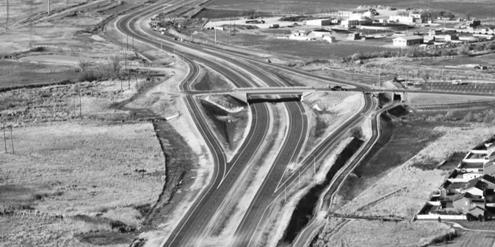
Ames Construction photo
The $750 million West Davis Highway project (Utah) aimed to facilitate smoother and more efficient travel. Ames Construction performed several upgrades to the highway.
















ackast-tr can f tions and t solu our See how productivity technology our

